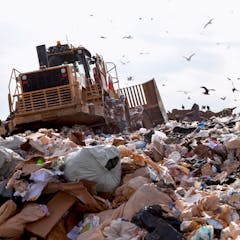
Articles on Reuse
Displaying 1 - 20 of 24 articles

Initiating a circular economy can help coastal west African countries to address plastic pollution with a World Bank fund.

Lagos has a waste problem that can be tackled by adopting a sustainable waste management policy that considers income brackets.

Making less plastic and reusing what exists should be the priority.

As the energy revolution gains pace, huge numbers of PV panels are already going to landfill. Many are still usable and even those that aren’t contain valuable materials that shouldn’t be discarded.

Humans generate a lot of trash, but there are cheaper and safer ways to handle it than loading it on rockets.

The recovery rate from construction and demolition waste has been rising steadily in Australia. However, the use of recycled materials is still not the norm across the construction industry.

The vaping craze sweeping the globe is leaving a legacy of contaiminated e-waste in landfill while waste management authorities scramble to set up recycling schemes.

Tech companies still make it difficult to get gadgets repaired.

One-tenth of global emissions result from the production and supply of building materials – and the construction process itself.

Allotments and repairing old clothes are just aspects of 1970s life that are making a comeback.

A large-scale survey asked people exactly that. One use of recycled carbon dioxide stood out.

The hard work of eliminating plastic waste must start with businesses.

Here’s how to quench your thirst in an environmentally responsible way.

A building designed to be easily taken apart so the components can be reused is a model for much less wasteful construction. It reduces resource use and environmental impacts, and can be cheaper too.

Life-cycle assessments of food packaging often omit the impact and possible toxicity of plastics leaking into the environment. Excluding these factors gives plastics an unjustified advantage.

In places where reusable cups are allowed, coffee drinkers, cafe owners and local governments can use insights from behavioural science to discourage use of throwaway cups.

We shouldn’t try to banish waste entirely. We need to rethink it.

Government agencies have detailed plans for responding to disasters, like the Dec. 10-11, 2021 tornados. But one issue doesn’t get enough attention: cleaning up the mess left behind.

As 2019 dawns, a worldwide circular economy could be created through international trade and trade agreements like the one that could be forged between Canada and the U.K., post-Brexit.

Trump’s plan to slap $200 billion more in tariffs on Chinese goods is premised on yesterday’s waste-fueled economy. Tomorrow’s economy is ‘circular.’
